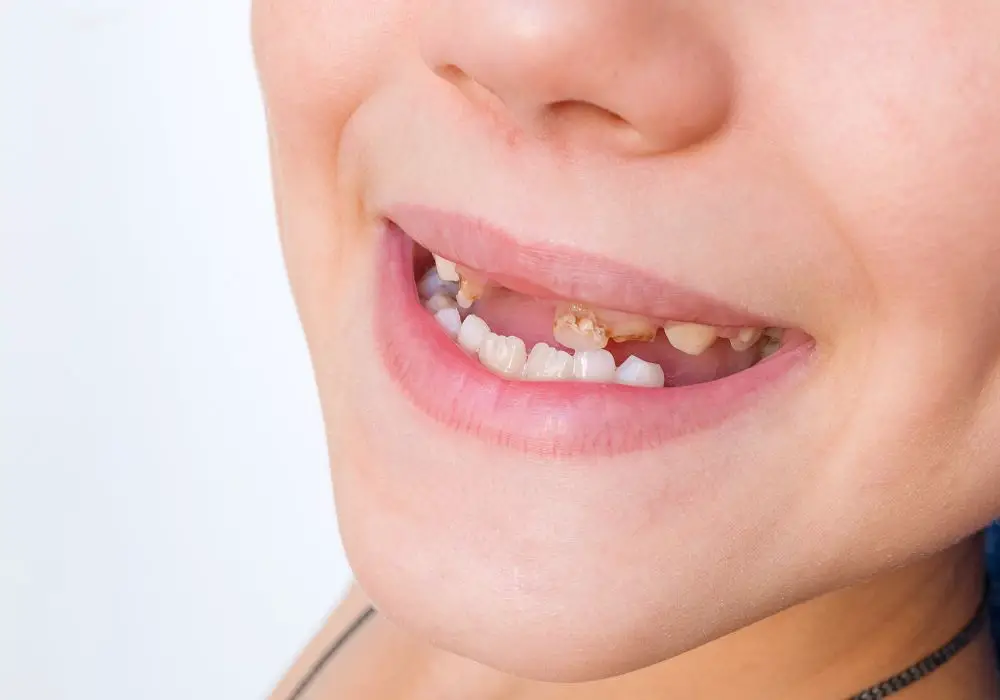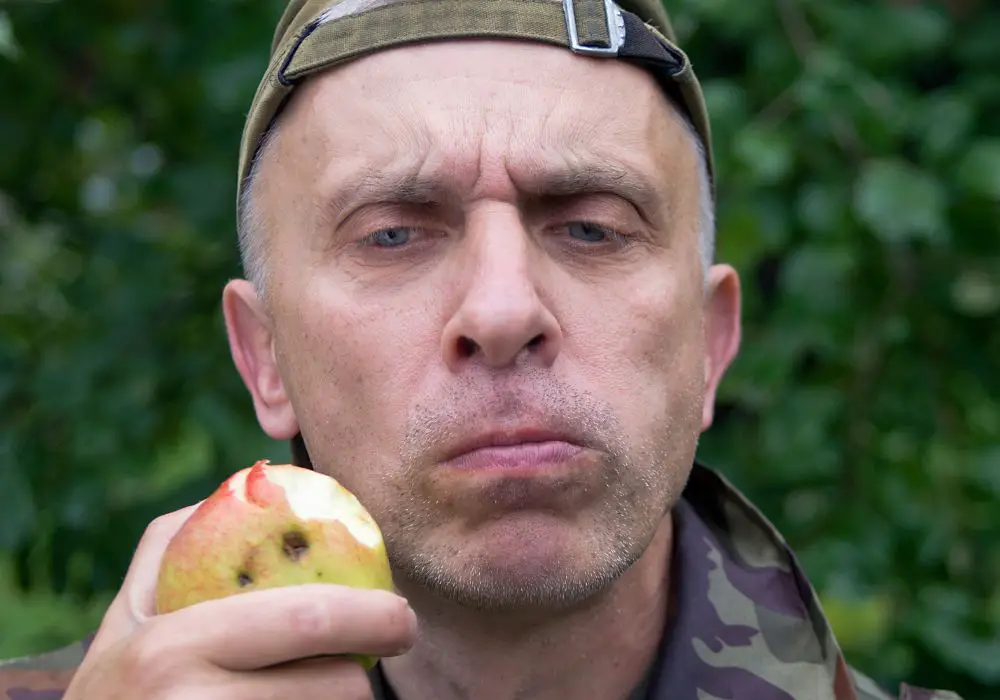Many people wonder why their front teeth do not seem to be growing in properly. The front teeth, also known as the incisors and canines, play an important role in speech, chewing, and appearance. When these teeth do not develop as expected, it can negatively impact a person’s bite, smile, and self-esteem. Understanding why front teeth may stop growing is the first step in seeking treatment.
Causes of stunted front tooth growth

There are several potential causes for front teeth not growing in fully:
Genetic factors
Some people may inherit small or misshapen teeth from their parents. Genetics can affect the size, spacing, and development of both baby and permanent teeth. If a child’s parents have small front teeth, the child is more likely to have similar sized teeth. Certain genetic conditions like ectodermal dysplasia can also cause missing or abnormally shaped teeth. Both environmental and genetic factors interact to determine tooth size and form.
Poor nutrition
Nutrition directly impacts oral health and tooth development. A lack of proper vitamins and nutrients during childhood can prevent adult teeth from reaching full size and maturity. Deficiencies in vitamin D, calcium, and phosphorus impede cellular growth and development necessary for teeth to form correctly. Malnutrition affects the hard mineralized tissues of teeth more than the softer pulp tissue, resulting in teeth that are stunted and weak. Good childhood nutrition helps ensure permanent teeth reach their maximum genetic potential.
Childhood dental trauma
Injuries to primary (baby) teeth can damage developing permanent teeth hiding below the gums. Trauma from falls, sports injuries, car accidents, etc. may knock out or fracture baby teeth, impacting the underlying unerupted permanent teeth. The impact can deform tooth buds or disrupt blood supply to the pulp tissue that nourishes the developing teeth. Lost or broken baby teeth also allow the tongue to thrust into exposed space, applying pressure to erupting teeth. Prompt dental treatment of any childhood mouth injury helps reduce risks.
Systemic disease
Certain medical conditions and their treatments can affect dental growth and development. For example, chemotherapy drugs used to treat childhood cancers may damage developing teeth. Radiation to the head and neck is also harmful. Diseases like juvenile diabetes can disrupt insulin regulation needed for tooth formation. Syphilis and congenital syphilis frequently cause dental defects. Asthma meds containing liquid forms of corticosteroids increase chances for enamel hypoplasia. The mouth reflects manifestations of many systemic childhood diseases.
Orthodontic problems
Issues with jaw growth, crowding, and spacing can limit incisor and canine development. When permanent teeth become impacted or blocked by other teeth, they may only partially erupt. Common orthodontic problems like overcrowding and misaligned jaws put teeth at risk. Crooked overlapping teeth often become stunted and rotated because they lack space to fully emerge through the gums. Proper early orthodontic evaluation and correction of any problems with the size or position of the jaw and surrounding teeth is essential.
Cleft lip/palate
A cleft lip or cleft palate affects facial development, including tooth growth. Children with oral clefts often have missing, malformed, displaced, or fragmented incisors and canines. Reconstructive surgeries can also hamper dental development. Teeth adjacent to clefts may tip into the cleft space or become impacted. Specialized orthodontic care is needed in these cases for best results.
Flourosis
Too much fluoride intake while teeth are still developing in childhood can cause fluorosis, resulting in white spots, streaks, pitting, or staining of enamel. Mild fluorosis may only affect aesthetics, but more advanced forms can also negatively impact tooth size and structure. Fluorosis most frequently affects permanent teeth still forming under the gums when a child ingests excess fluoride. Monitoring fluoride sources is important.
Signs of stunted front tooth growth
How can you tell if your front adult teeth are not reaching full size? Some signs include:
- Smaller than expected permanent incisors/canines based on age
- Incomplete tooth eruption leaving gaps
- Crowding due to lack of space for full eruption
- Crooked or overlapping front teeth
- Teeth appear more recessed due to lack of projection
- Asymmetrical teeth sized on each side
- Spacing between teeth due to missing tissue
- Discoloration or translucency indicating enamel deficiency
- Pitted, stained, or mottled enamel signaling dental fluorosis
Careful clinical and radiographic dental exams are needed to determine if teeth are stunted or simply small but normally developed. Comparing deciduous tooth sizes can indicate if permanent successors will be reduced in size. Monitoring eruption patterns is also key, as delayed emergence may indicate problems. Dental impressions showing the position of unerupted teeth also help dentists evaluate developing teeth.
Problems caused by stunted front teeth

Having incompletely developed maxillary and mandibular incisors and canines can cause various issues:
Aesthetic concerns
Small, recessed, or misshapen front teeth detract from an attractive smile and appearance. Gaps from missing tissue or asymmetry between two sides also impacts aesthetics. Some people feel self-conscious about dental flaws. Shortened clinical crown height can expose too much gingiva when smiling. Mottled fluorosis stains also create an unappealing smile. These problems often lower self-esteem.
Speech difficulties
The tongue requires properly articulated incisors and canines to make certain sounds like s, f, v, th, l, and r. Speech therapy may be needed if these teeth cause problems with pronunciation of words. For some people, these teeth help properly guide tongue position against the front palate during speech. Altered structure changes this positioning.
Difficulty chewing
Incisors and canines grip and tear food during mastication. Reduced size or abnormal shape can hinder ability to bite off pieces, chew effectively, and process foods like meats, fruits, and vegetables. Stunted front teeth reduce the number of teeth available to assist with biting and chewing, forcing more work onto back teeth. This can overload the chewing capacity of posterior teeth.
Crooked bite
Normally developed front teeth guide proper occlusion between upper and lower jaws. When growth is stunted, they cannot provide this guidance, leading to malocclusion problems like overbites, underbites, open bites, and crossbites. This can also result in abnormal wear of tooth surfaces from uneven contacts.
Tooth wear
Smaller teeth have less durable enamel/dentin bulk and are more prone to excessive wearing down, abrasion, and chipping. This accelerates with age as the smaller teeth cannot withstand years of use. Shorter roots also provide less stability and anchorage, increasing tooth mobility and chances of displacement from function.
Periodontal issues
Sometimes stunted incisors have short roots providing little stability and anchorage in the jawbone. This leads to increased mobility, drifting, tipping, rotation, and ultimately, earlier tooth loss. Bone and gum tissues cannot adequately support the teeth. Teeth may loosen or detach sooner, requiring extractions.
Need for dental treatment
Whether for health or aesthetic reasons, many patients seek treatment like orthodontics, veneers, implants, or crowns for stunted front teeth. Restorative solutions may be required at a younger than average age due to accelerated wear, damage, and loosening. More intensive maintenance is also needed. The shortened lifespan of affected teeth increases long-term dental costs.
Diagnosing causes of front tooth stunting
Pinpointing the exact reason front teeth are not developing fully requires working with your dentist for a complete oral examination. They may recommend:
- Dental X-rays to visualize impacted or hidden teeth
- Panoramic x-rays to see all teeth in the jaws
- Photographs and digital scans of the teeth and smile
- Study models to analyze dental arches and occlusion
- Review of medical/dental history for clues
- Referrals to orthodontists or oral surgeons if needed
- Pulp vitality testing if prior trauma occurred
Careful analysis of facial and dental development combined with your health history helps identify contributing factors. Genetic testing may provide insight in some cases. Your dentist will likely need to monitor growth over time to make an accurate diagnosis. Don’t hesitate to discuss all concerns and observations you may have about changes in your teeth.
Treatment options

Depending on the cause and severity of stunted front tooth growth, different solutions are available:
Dental monitoring
If no acute treatment is currently needed, regular dental exams and cleaning are important to protect oral health while watching for changes. X-rays taken periodically track eruption status.
Habit control
Stopping any thumb-sucking or tongue thrusting habits allows proper tooth positioning as jaws continue developing. Breaking these habits is essential for ideal dental alignment.
Orthodontics
Tooth alignment, jaw repositioning, and braces can guide teeth into better positions for improved function and aesthetics. This also opens space for teeth to erupt more fully into the arches. Dentists may install spacers or extract teeth to create room.
Dental restorations
Bonding, veneers, crowns, and implants can cosmetically enhance small, worn down, or misshapen teeth for a beautiful smile. These solutions add length and improve shape after full eruption is complete.
Tooth extraction
Removing overcrowded or blocking teeth provides room for impacted front teeth to finish erupting. This is a common technique used by orthodontists when arch space is limited.
Dental surgery
Oral surgeons may surgically expose impacted teeth and attach orthodontic hardware to pull them into place. This exposure provides access for bonding or restoration after repositioning.
Improving nutrition
A healthy childhood diet supports cellular growth and development that promotes full eruption of adult teeth. Good nutrition may help teeth reach more of their genetic potential.
Fluoride guidance
Monitoring fluoride sources can help prevent overexposure while teeth are still developing under the gums. This minimizes risks of fluorosis defects.
The best solution is personalized to your unique oral condition, concerns, and goals. Don’t hesitate to discuss all options with your dentist.
Frequently Asked Questions
Can front adult teeth still erupt if baby teeth are removed early?
Yes, permanent teeth can still develop normally if baby teeth are lost prematurely due to decay, trauma, etc. However, missing baby teeth for long periods can allow harmful tongue habits to form or teeth to drift. So timely eruption into lost space helps maintain position. Premature loss of baby molars is especially problematic.
How do you fix a gap from a stunted front tooth?
Gaps from small or misshapen front teeth can be fixed with dental bonding, veneers, crowns, or implants after full eruption. Orthodontics may first be needed to align surrounding teeth and create an ideal space. Extracting small adjacent teeth also opens space for restorations. Dentists follow eruption closely to time treatment.
What causes only one front tooth to be stunted?
Localized trauma, infection, gangrene, cleft lip, or other oral health issue affecting just that tooth bud can result in one front tooth not developing fully. Genetic causes may also disproportionately impact a single tooth. Identifying the reason helps determine options.
Can stunted adult teeth still need root canals?
Yes, even small or malformed permanent teeth can develop cavities and require root canal therapy. The pulp inside remains vulnerable to decay. However, root canals are more difficult in stunted teeth with short, narrow roots. The chances of complications increase, which may lead to extraction decisions.
When do front adult teeth stop growing in height?
Maxillary central incisors and canines usually complete crown formation by ages 12-14. Mandibular teeth finish slightly sooner. However, minor incremental eruption and movement within the jawbone continues lifelong as teeth wear down. Teeth also drift over decades due to missing teeth, periodontal disease, etc.
Conclusion
Having front teeth that are stunted, undersized, or misaligned can happen for a number of reasons. While frustrating and concerning, many effective treatment options exist nowadays. Working closely with your dentist allows creating a personalized treatment plan to get your front teeth healthy and looking their best, improving both smile aesthetics and dental function. Don’t hesitate to ask your dentist any other questions you may have about stunted front tooth growth. Staying informed about the issue is key to achieving an optimal outcome.







